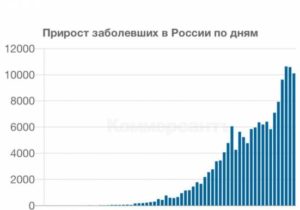
“Almost zero”. This is a fair assessment of the health capacities to successfully rein in the foreseeable future, the epidemic of obesity and diabetes. At least, appreciates his chances Director General of the world health organization Margaret Chan (Margaret Chan) — and she knows what he’s talking about. On almost zero chances of health Chen said at the annual meeting of the National medical Academy, held in October. That is, she and her colleagues around the world, there is no way to prevent the deterioration of the already hideous situation. Chan called the epidemic “slow catastrophe”, and it talks about how bad it is. The explosive growth of obesity in the population, leading to increased incidence of diabetes, frankly, defies imagination. It is a disease that causes blindness, kidney failure, cardiovascular disease, limb amputation and premature death. Judging by the hospital records from medical records of patients in the mid-nineteenth century, this disease practically did not exist. And now it affects one out of every eleven American. And in some countries every second adult suffers from diabetes.
In the face of such a crisis health situation itself begs the question: why? Any failure of health you can find a lot of reasons, but this scale of failures are unprecedented. The simplest explanation is that we’re fighting the wrong pathogen, our understanding of the etiology of obesity and diabetes why something is wrong, and it is fraught with tragedy.
Researchers in more specific areas of knowledge have a name for such situations: pathological science. The definition of science in 1953, gave the Nobel laureate Irving Langmuir (Irving Langmuir), who described it as “the science of things that are not so.” Where experimental research is not available or the roads are impossible, erroneous assumptions, misconceptions and pathological science can exist indefinitely. It is possible, although it is regrettable that this is the case with the epidemic of obesity and diabetes. Maybe we just wrongly imagine the real connection between diet, lifestyle and related diseases such as obesity and diabetes? As he wrote in 1621 the Oxford scholar Robert Burton (Robert Burton) in his “Anatomy of melancholy”, in cases when the medications are “imperfect, weak and meaningless,” it’s possible that “the causes of the disease misunderstood”.
History of research of obesity and nutrition suggests that that is exactly what happened. In the period between the two world wars, German and Austrian researchers came to the conclusion that common obesity is clearly caused by hormonal disorders. From the beginning of 1960-ies of other researchers found a link between hormonal disorders and sugar in our diet. But during the war the German-Austrian line of thinking has disappeared, and the idea of sugar as the main culprit is not found the backup. It is quite scornfully nutritionists that by the 1970 years fixated on fat, calling them the main cause of chronic diseases. Now that started this epidemic, but new studies give very convincing arguments and evidence, it is time to revise our causal perspectives on obesity and diabetes, and to think about not playing here its fatal role sugar.
When scientists and experts from the health sector discuss today the question about why they can’t stop a tidal wave of obesity and diabetes, they attribute this to “the multifactorial nature and complexity of these diseases,” meaning by this that their failure is understandable. But it overshadows the reality, which is that prescriptions for the prevention and treatment of these two diseases are almost entirely dependent on two simple causal concepts, and it is possible that neither are correct.
In accordance with the first concept, obesity is equivalent to type II diabetes (the most common form of the disease, which were previously considered “adult” disease until it started to appear in children). Since obesity and type II diabetes in humans are closely linked, it has been suggested that diabetes is caused by obesity, or at least the accumulation of excess fat. In accordance with this logic, whatever the cause of obesity, she eventually also becomes a cause of diabetes.
The second concept is the attempt to explain the “fundamental cause” of the obesity is energy imbalance between calories consumed on one hand, and calories expended on the other.
This approach, which adheres to the who and virtually all other medical authorities, this paradigm kunovska in the true sense of the word. Scientists and specialists from the sphere of health, called obesity a disorder of energy balance. This concept is the basis of almost all aspects of research on obesity, from prevention to treatment, and in this regard, and diabetes. As such, it shapes the direction of our thoughts on what is the role of the main suspect, refined, or added sugar, and particularly sucrose (table sugar) and corn syrup with high fructose.
The who and other organizations outside of the health sector recently began to argue that sugar and especially sugary drinks need to impose high tax and regulate their production. But this is not due to the fact that sugar causes disease (such a causal relationship we use to mention the fact that cigarettes cause lung cancer), but rather due to the fact that sugar, in their opinion, that “extra calories” that we consume. According to this view, we get fat because the eat too much or too little exercise. The solution is in moderate eating, moderate sugar consumption and increasing physical activity.
The system of representations about energy balance implies that food affects the fat tissue in our body just through the calorie or energy content. That is, through the energy that we consume, but not spent, from-for what it collects, or oxidizes. This is the only variable of importance. This is a consequence of the phrase “a calorie is a calorie”, which in the 1960-ies was a real spell for researchers in nutrition and obesity. It spoke whenever it was necessary to confirm the dogma that the understanding and treatment of obesity in humans should be taken into account solely calories.
This logic has become a source of vitality for the sugar industry. If sugar is uniquely toxic, having some special property that makes us accumulate fat or become diabetic, the health authorities need to regulate its production and consumption. But if sugar just increases the number of calories in our diet, like any other food, so it is a benign product. When the sugar industry in 1956, went into advertising offensive across the country in order to deny reports that sugar “look fat”, she did this seemingly on a solid scientific basis, according to which sugar doesn’t reduce weight, but not increases it. So read the advertisement. “This is not. All food provides calories, and calories from sugar, meat, grapefruit and ice cream, there is no difference”.
And even 60 years later, when The New York Times in 2015, wrote that scientists acted at the behest of Coca-Cola, taking the company’s money to Finance non-profit organization Global Energy Balance Network and “taking the blame for obesity from bad diet”, to protect the sugar was put all the same logic. If you think that the cause of obesity is excess calories, in this case, the solution is not in the rejection of Coca-Cola, and its moderate consumption (like any other product) either in burning of calories through exercise. For the sugar industry and for suppliers of sweet food and drink (such as Coca-Cola) this amazingly persistent and perennial concept that explains why some of us gets fat (or is fat), and some don’t. Turns out it’s a gift that not all receive.
 © flickr.com, howzeyКубики sugar
© flickr.com, howzeyКубики sugar
Consequently, this important question can be put differently: is it true hypothesis about the energy imbalance as the source of obesity? Is this the right approach to understanding this disease? More than a hundred years there are competing with this approach hypothesis. According to her, obesity is not caused by violation of the energy balance, and the excess fat accumulated in the body. Therefore, it is clear that it is a hormonal disorder and metabolic disorders that result from dysfunction of the endocrine glands. This was in 1930-e years spoke and wrote Eugene Dubois (Eugene Du Bois), who was at that time a leading USA authority on metabolism. According to this logic, our food affects fat storage not because it contained calories, but because it contained essential nutrients, which are proteins, fats and carbohydrates. This paradigm shows how organisms (particularly human) are carefully separated they consume energotejash nutrients by deciding to spend them on energy production, to keep in reserve or use for restoration of tissues and organs. It suggests that disruption of this well-tuned self-regulating homeostatic system (which is balanced biologically) are a necessary element in explaining why caloric fat is stored in reserve, and why there is concomitant obesity diabetes.
This alternative hypothesis implies that the sugar has a unique effect on the human body, leading directly to diabetes and obesity, regardless of the number of calories consumed. If you think thus, it appears that refined sugar is indeed toxic, although the toxicity is making himself known through the years and decades. We get fat and sick with diabetes not due to the fact that eating too much sugar, although in terms of “excessive consumption” and “overeating” hidden tautology, and because sugar has some unique physiological, metabolic and hormonal properties that directly cause such violations. If all this is true, then the idea of obesity as a violation of the energy balance is as meaningless as the statement that poverty was a cash balance (caused, of course, the fact that we earn too little or too much spending or both). Introducing obesity as a problem caused by excessive consumption and lack of physical activity, the researchers not only turned into a behavior problem of a physiological defect, such as excessive accumulation of body fat. They made a very important error that has been building up for decades, and today turned into the idea of a huge scale, which is too important to deny.
To understand how this happened, we must turn to history. Modern era in nutrition began in the late 1860’s, when German scientists began to use huge at the time the devices called calorimeters. They allowed them to measure the amount of energy consumed in experimental human or an animal in different conditions of nutrition and activity. Following half a century, almost all research in the field of nutrition was aimed to study energy balance (the energy content of the product and its expenditure of those who consume these products), as well as protein, vitamins, minerals and fiber, which are necessary for Wellness. It was derived from the available at that time scientific instruments, and since this approach is the basis of scientific knowledge about nutrition.
 © RIA Novosti, Grigory Sysoev | go to fotobanka of Coca-Cola plant in Moscow
© RIA Novosti, Grigory Sysoev | go to fotobanka of Coca-Cola plant in Moscow
When today’s nutritionists say that sugar contains “empty calories”, they operate on data of researches of a century ago, and the tools that were available to scientists in that era. When researchers obesity explain its imbalance between consumed and spent energy, they do the same thing. In both cases, they proceed from the fact that the industries of knowledge that came later, including entire medical discipline, in this case irrelevant.
The idea of obesity as a violation of the energy balance arose directly from the fact that at the end of the 19th century was considered one of the greatest triumphs of the science of nutrition. We are talking about the confirmation that the laws of thermodynamics, and in particular, the law of conservation of energy, applicable not only to dead matter but living organisms, as well as to man. Acting according to these findings, nutritionists turned of calories and energy in the basis of its discipline. Of course, did the exact same thing and the doctors, arguing about the causes of obesity. By the beginning of the 20th century, the German diabetes specialist Carl von Noorden (Carl von Noorden) suggested that “eating in larger quantities than required by the body, leading to fat accumulation and obesity if this imbalance persists for a long time.”
In the 1920-ies the ideas of background Noorden picked up a doctor from the University of Michigan Luis Newburgh (Newburgh Louis), who adhered, as he considered undeniable truths: “All these obese people are similar in one very important respect — they overeat”. Based on the fact that overeating is the cause of obesity, Newberg explained this disease is a kind of combination of “perverted appetite” (excessive energy consumption) and “reduced the outflow of energy” (insufficient consumption). In order to explain why these fat people are not eating less and not increase physical activity (in the end, it is in their power), Newberg suggested that overeating and/or insufficient energy expenditure are often compounded by various human weaknesses, such as “excessive eating and ignorance.” Thus, he blamed the victim and started the process, which in the 1960-ies has transformed the study of obesity in the subsection of psychology and behavioral science unit.
Such logic is present to this day. By 1939, the University of Michigan already credited to Newburgh is the discovery that “the whole problem of weight lies in regulation of the inflow and outflow of calories” and that he “convincingly refuted the generally accepted theory that obesity is the result of some fundamental defect”.
But to ignore the existence of the fundamental defect was not easy, and scientists of the time from Germany and Austria were always arguing on this topic. They came to the conclusion that obesity can only be explained by this defect and hormonal or regulatory. It should be noted that the scientific community in Germany and Austria paved the way for the creation of all fields of science that studies obesity: dietetics is the study of metabolism, endocrinology and genetics. These scientists throughout the Second world war was dominated by medical science and in physics and chemistry. That was the era when the language of communication in science (medical and other) was a German, and when serious researchers went to study in Germany and Austria, where they were instructed by recognized authorities.
At the same time with the assumptions the background of Noordin that obesity is the result of a disturbance of the energy balance, his contemporary Gustav von Bergmann (Gustav von Bergmann), who was destined to become the leading German specialist in internal medicine, argued that it is not. Von Bergmann noted that excessive consumption of energy, which background Noorden called the cause of obesity, just an explanation of what happens if you increase the mass of the system, not the explanation of the disease.
Simply put, the goal of hypothesis in science is to give an explanation of what we observe — either in nature or in the laboratory. How many of these observations can simply and effectively explain and predict this hypothesis? The concept of energy balance does not explain anything. She can’t explain why calories fat held in body fat and will not oxidize, turning into fuel. It also offers no explanation for the genetic basis of obesity (identical twins identical not only facial features, height, hair color, but the addition of the body) and so, why fat accumulates in different ways in men and women.
According to the logic of Bergman, obesity is not a problem of energy balance, and the problem of the collection of fat (such as global warming, the problem is not in the energy balance, and the capture of energy). But here we must answer the question of why it happens capture. Any viable hypothesis of obesity must explain why the fat tissue of obese person so eagerly stored calories as fat, instead of subjecting the fat to the metabolism and giving the body energy.
By 1930 Julius Bauer (Bauer Julius) from the University of Vienna (The New York Times called him an outstanding specialist in internal medicine) have adopted the ideas of Bergman, saying that obesity is probably the result of a failure of the biological factors that usually control the accumulation of fat. Bauer argued that these factors obviously affect fat cells, contributing to excessive accumulation of calories as fat, and this in turn deprives the body of energy necessary for successful development. According to such a hormonal-regulatory concept, the excessive accumulation of fat causes hunger and physical inactivity, not Vice versa.
Bauer compared the fatty tissues fat man with a malignant tumor and a uterine fetus, the uterus and Breasts of a pregnant woman. All of them have a different purpose, and this is making them take calories of fuel circulation and to stock up on them, or use them locally, regardless of how much a person eats and how much physical exercises. Obesity, Bauer wrote, there is a kind of anarchy; the adipose tissue lives for itself and by itself, and not embedded in the precise regulation of the whole organism”.
In 1938, Russell Wilder (Russell Wilder), who headed the medical faculty at the Mayo clinic, wrote that the German-Austrian hypothesis “deserves attentive consideration,” and that “the withdrawal from circulation more than the usual amount of fat after eating it is possible to explain the delayed sensation of satiety, and abnormal addiction to carbs from fat people… a Slight tendency in this direction can have huge consequences over time”.
In 1940, when the endocrinologist Hugo Rony (Rony Hugo) from northwestern University in Chicago published the first U.S. treatise on obesity, he said that European specialists “more or less fully” recognized hormone-regulatory hypothesis.
And then everything disappeared. The medical-research community in Germany and Austria disappeared with the coming to power of Hitler, and the center of medical science has shifted from these countries to the United States, that have not been destroyed during the war. Changed the language of scientific communication — from German to English. When the change occurred, the best ideas in the world of medical science of that period ceased to read, and they ceased to refer to. The concept of obesity as a hormonal and regulatory disorders out of fashion.
In the postwar era in the history of scientific research on nutrition and obesity the concept of energy balance Newberg has established itself as a system of ideas about obesity, but not because she gave any meaningful answers to questions about obesity and about how, why and when we accumulate excess fat. The reason is that it was an American concept that emerged at a time when in this region the dominant positions were taken by American doctors, many of them without a sufficient level of scientific training.
The consolidation of the paradigm of energy balance and loss of hormonal and regulatory hypotheses can be seen from the examples of referencing and citation. In 1941, Bauer published his second and last article about obesity in English. It was an article in the journal Archives of Internal Medicine 27 pages entitled “Obesity: pathogenesis, etiology and treatment”. (By the time Bauer moved to the United States, where he lived without a permanent job in Los Angeles.) The first third of the article he devoted to detailed criticism of the “energy theory of obesity” Newberg, after which he went on to discuss the “biological theory” and the evidence as to why obesity is a hormonal, regulatory disorder. In 1942, Newburgh answered him with an article on page 64, published in the same journal, where he rejected biological hypothesis and stated that obesity is “invariably the result of imbalances between the inflow and outflow of energy.” In 1944, Newburgh published a second review, this time in the edition of Physiological Reviews, where again it insisted that the ideas of von Bergmann and Bauer untenable.
In 1959, the references to article Bauer was only 10, and his half century was not quoted in the indexed medical literature. Meanwhile, excerpts from two articles of Newburgh about obesity continued to quote until the end of 1970-ies, and references to them were 69 and 64, respectively. This is a huge number for that time.
Despite the almost universal recognition of energy theory has had significant disagreements with the rest of science. For example, models of obesity in animals, the first discussion in the literature dates back to the late 1930-ies, has consistently refuted the arguments of the Newburgh and confirmed the arguments of Bauer. Obese animals often showed that Newburgh had called a perverted appetite (technically, it’s bulimia). Gaining weight, they felt the growing hunger and consume more food. But they invariably become obese, or at least much fatter, even if they stopped there, or if they were allowed to eat nothing more than what they ate animals from the control group, who often were from the same litter and stayed thin.
Whatever the fundamental defect or flaw, forcing these animals to accumulate excessive amounts of fat, to eliminate a perverted appetite (eating) was impossible. This defect was either to force fat cells to accumulate calories as fat, or suppressing the animal’s ability to burn fatty acids for energy. Or both.
But only in 1960-ies scientists have shed light on the basic mechanisms of fat deposition. It took to invent a technology that allows researchers to accurately measure the level of hormones in the blood. This work was performed biophysicist Rosalyn Yalo (Rosalyn Yalow) together with doctor Solomon Barsoom (Solomon Berson). When Yalo in 1977 was awarded the Nobel prize for this work (Berson before it not survived), the Nobel Committee aptly described this achievement, calling it “a revolution in biomedical research.” Those who were interested in the problems of obesity, were finally able to give answers to questions that the pre-war doctors could only guess and speculate: what hormones regulate the accumulation of fat in adipose tissue and its use for energy generation in the interests of the body.
The answers began to arrive already in the earliest publications, the authors were scientists from the laboratory of Yalo and persona. And they very quickly confirmed. Turned out to be just all the hormones mobilize fatty acids from fat cells to use as fuel. One notable exception is insulin, which divides the way we use fuel consumption. In particular, it instructs fat cells to store fat, and at the same time promotes the uptake and oxidation of glucose (blood sugar) in the cells of the muscles and internal organs. In other words, when insulin is secreted mainly in response to the appearance of carbohydrates in our diet, it instructs cells to burn the carbs as fuel and store fat. As suggested by Yalo and Berson in 1965, biological factors necessary to mobilize stored fat and use it as fuel, is “a negative stimulus of a lack of insulin.” Quite simply, when insulin levels in the blood increase, we accumulate fat and convert glucose into fuel. And when the level of insulin drops, fat is mobilized, and we burn it instead of glucose.
Yalo and Berson called insulin lipogen, or euroopasse hormone. This lipogenic signal should be disabled, or at least significantly muted to fat cells began to throw away the accumulated fat in the body for metabolism and energy production. Researchers obesity like to say that a mandatory condition of diet for weight loss — restriction of calories consumed. However, this alternative biological theory says that a prerequisite is the reduction of insulin. But the more we consume carbohydrates, especially sugar, the higher the level of insulin.
The second opening of Yalo and persona at the initial stage of research even more clearly illustrated the role that insulin may play in obesity. Patients with type II diabetes and obesity often have higher levels of blood sugar and an abnormally high level of insulin. This means that the cells of the muscles and internal organs of these people resistant to insulin in your bloodstream. This observation was quickly and repeatedly confirmed. By the middle of 1960-ies and the doctors and scientists already knew that type II diabetes is not a disease of insulin deficiency as type I diabetes — at least initially. It is a violation of sensitivity to insulin. It follows that the cause of this disease, and also obesity is high circulating levels of insulin.
Apparently, fat people get fat not because of the fact that eat a lot or a little exercise. Rather, they have elevated insulin or their fat is too sensitive to insulin, which they produce. Perhaps the link between obesity and type II diabetes is not causal, as for years doctors.
Berson and Yalo looked at it differently. “We agree that obesity predisposes one to diabetes. But isn’t diabetes in a mild form does not create a predisposition to obesity?— wrote in 1965, their research team. — Since insulin is a very potent lipogenic substance, chronic [enhanced] levels of insulin promotes fat accumulation in a body.”
If the assumptions of Yalo and persona true (and they are quite reasonable and logical from a biological point of view), then obesity is definitely a hormonal/regulatory defect, Bauer and von Bergman are right. But to make such a conclusion, it was necessary to explain why we become immune to insulin. Giving up twenty years earlier from hormonal hypotheses of obesity, scientists have determined the answer to this question, suggesting that insulin resistance caused obesity and cause of obesity is very simple: the number of calories consumed exceeds the amount consumed.
But as always, it was the problem of dissonance of consciousness. Open Yalo and persona directly and indirectly led to the notion that a limited consumption of carbohydrates and limited sugar intake or complete rejection of it is an effective means to reduce weight in obese people. By the mid-1960s in Vogue diet with restriction of carbohydrates, which usually involved a large amount of fat. They advertised the doctors, who often wrote very popular books about diet.
Experts on nutrition, headed by Fred Ster (Fred Stare) and Jean Meyer (Jean Mayer) of Harvard University denounced these diets, calling them a dangerous eccentricity due to the large amount of fat, and argued that they were promoting the sugar and grain industry. They assumed that authors of such diets among doctors trying to fool full of people with their false arguments that you can lose weight without limiting your diet, which is very difficult.
This battle played out in the mid 1970-ies. On one side stood the scientific experts on nutrition and obesity researchers and other doctors who have written books about diet. In the early 1960s, researchers believed the obesity, that it is really caused by a violation of power — perverted appetite, as he said Newberg. The revolution in endocrinology, which spurred revolutionary discovery of Yalo and persona, are unable to convince them otherwise.
The dissonance of consciousness arising from biological discoveries of the role of insulin in fat accumulation, can be observed today, if you look through the tutorials. In these books, for example, in “principles of biochemistry” Lehninger, which was published in the sixth edition, discusses the regulation of fat deposition in fat cells. The author argues that this process is driven “high content of glucose in the blood, causing insulin spike” that contributes to the fat accumulation and at the same time, “prevents the mobilization of fatty acids in adipose tissue”. However, there are such sections on the subject of human obesity, where it States unequivocally that it is the result of the fact that “when food is absorbed more calories than is expended during exercise and other activity that require energy.” That is, in the same tutorial there are contradictory statements. But both of these claims cannot be true. Improper output is the following: the mechanism for determining accumulating or not our fat cells excessive amounts of fat, somehow different from the mechanism that determines whether the fat we are, although our excess fat is simply the sum of all the excess fat stored in these cells.
But there is another, simpler hypothesis. That increases the amount of fat in our fat cells, at the same time makes us fat. We are talking about “high levels of glucose in the blood,” and the accompanying elevated insulin levels and insulin resistance caused by carbohydrates in our diet. Insulin is secreted in response to increasing blood sugar and raising blood sugar is a reaction to foods rich in carbohydrates. The sugar involved in this case partly due to the fact that its chemical structure contains large amounts of fructose, and fructose in the metabolism disintegrates in the liver. So she’s the Prime suspect in the deposition of fat in the liver cells, which, according to hypotheses put forward, causing insulin resistance.
If we agree with the view of Bergman and Bauer that obesity is a hormonal, regulatory disorder, and combine this view with the discoveries of the 1960-ies on the hormonal regulation of body fat and insulin resistance associated with obesity and diabetes, then the result will be a very simple hypothesis that explains not only obesity, but also of the current epidemic, and our inability to contain them. Sugar and processed grain products constitute a large part consumed in the West food cause disorder of the homeostatic system by which insulin regulates fat storage and blood sugar levels. Therefore, the same components of our diet — sugar and processed grain products — can cause obesity and diabetes. Focusing on the problem of overeating and lack of physical activity, the health authorities are simply not able to find the true causes.
Scientific ideas are always formed under the influence of those tools that are involved in the research. They dictate the questions you ask and the answers that can be obtained. And this, in turn, generates causal hypotheses and paradigms. In perfect condition, when there is a new technology and the opportunity to ask new questions, there may be new answers, and paradigms can change. But for this the scientific community must be ready to accept the new evidence and facts, and new thinking. In studies of nutrition and obesity such readiness was not simple. And as the epidemic of obesity and diabetes has already exceeded the crisis level, it is time for us to think seriously about what our regulations and approaches to the prevention and treatment of these diseases simply wrong, because they are based on the wrong paradigm and long-term scientific misconceptions?







